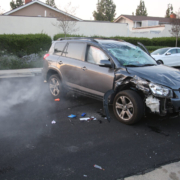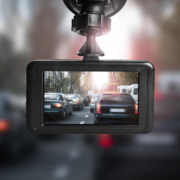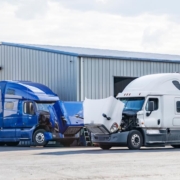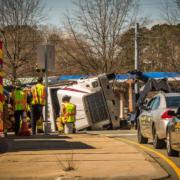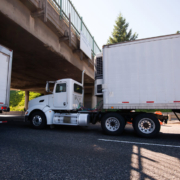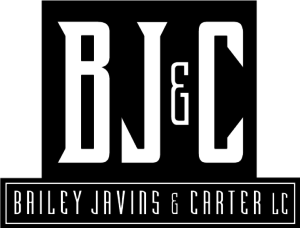What You Need to Know About Trucks’ No-Zones
As motorists, understanding trucks’ blind spots or “no-zones” is a critical part of safe driving while sharing the road with commercial vehicles. Unfortunately, many drivers drastically underestimate or misunderstand a truck’s blind spots. This leaves many drivers unknowingly driving in a place where truck drivers simply cannot see them. As a result, thousands of preventable injuries occur every single year.
Keep reading to learn more about where a truck’s no-zones are and how you can keep yourself safe. When you’re ready to discuss your truck accident claim in greater detail, call Bailey Javins & Carter at 800-497-0234.
Identifying No-Zones
No-zones, also known as blind spots, refer to areas around trucks where the driver’s visibility is limited or completely blocked. On passenger vehicles, the no-zones are much smaller and often completely avoidable with a slight change in positioning. The shape and size of tractor-trailers mean that no-zones are considerably larger. They include:
- The area directly behind the truck and up to 30 feet beyond
- The space 20 feet in front of a truck
- Both sides of the truck, making up a triangular shape extending from the side view mirrors out towards the back of the truck
As you can see, there are no zones on every side of a truck. This means that no matter where you are in relation to a commercial truck, you’re at risk of being invisible to the truck driver.
Risks of No-Zones
The risks associated with entering trucks’ no-zones are significant and often lead to accidents that result in catastrophic or severe injuries. When a vehicle enters a truck’s blind spot, the truck driver may be unaware of its presence, increasing the likelihood of collisions, side-swipes, or being forced off the road into the median or guardrail.
In worst-case scenarios, vehicles may become trapped or crushed beneath the truck, resulting in catastrophic injuries or fatalities. This is known as an underride accident, and it’s one of the most dangerous types of truck collisions. Additionally, sudden maneuvers by truck drivers to avoid obstacles or hazards may result in them hitting drivers that they are unaware of in their no-zones. While truck drivers have an obligation to ensure that their blind spots are clear before driving, other drivers have an obligation to stay out of those danger zones.
How to Stay Safe While Driving Around Trucks
To protect yourself while driving near tractor-trailers, there are several precautions you can take:
- Keep a safe following distance: Stay at least four car lengths behind a truck at all times.
- Avoid lingering in blind spots: There are times you’ll have to pass through a truck’s blind spot; when that happens, make sure you pass through swiftly and safely. If you cannot pass through in a timely manner, stay back and out of the blind spot until you can.
- Use caution during lane changes: Signal well in advance and ensure there is ample space before merging in front of or behind a truck. If you aren’t careful, you could end up stuck in a blind spot without any safe way out.
- Be predictable and visible: Driving predictably reduces your risk of being in an accident, so don’t swerve in and out of traffic or drive erratically. Stay safe and within the speed limit. Stay visible at all times.
- Stay alert and attentive: It’s never good to drive while distracted, but it’s especially risky when you’re around tractor-trailers. Watch the vehicles around you, look out for turn signals, and be ready to switch lanes, speed up, or slow down as needed.
With these tips, you can dramatically decrease your risk of being involved in a blind spot accident and keep yourself and your occupants safe. Just remember to keep a truck’s no-zones in mind while sharing the road with tractor-trailers, and you’ll do your part to make the roads safe.
Injured in a Truck Accident? Call Bailey Javins & Carter
If you or someone you love has been injured in a truck accident, find out if you’re entitled to compensation. Set up a free consultation with Bailey Javins & Carter now—call our Charleston team at 800-497-0234 or get in touch online.


